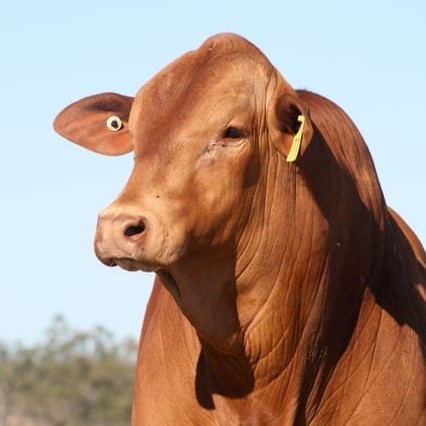 Greater accuracy across a greater number of beef breeds are the key features in an important ‘second-generation’ poll gene market test launched in Brisbane on Friday.
Greater accuracy across a greater number of beef breeds are the key features in an important ‘second-generation’ poll gene market test launched in Brisbane on Friday.
The new Australian Poll Gene Marker test will determine with high accuracy if an animal is ‘true polled’ (homozygous) and measures the likelihood that a polled animal carries only the polled gene. Importantly the test is highly accurate across a wide selection of breeds.
CSIRO scientist Dr John Henshall was the guest speaker at a beef industry breakfast hosted by MLA on Friday, setting the scene for the test’s launch by highlighting the large productivity losses associated with dehorning cattle, including calf mortality, additional labour and weightgain setback caused by the procedure. In addition there were considerable financial impacts horned cattle cause through bruising ($4/head studies showed), hide damage, and elevated workplace risk for people.
MLA managing director Scott Hansen said industry estimates had suggested bruising was costing the industry $40 million a year in lost productivity, and the largest single contributor to that was horned cattle.
In managing the problem through de-horning, other impacts included calf mortality (up to 2pc of calves could be lost through the de-horning process), and checks in weightgain associated with stressors caused by the dehorning process.
Mr Hansen said productivity losses associated with the post-dehorning process, alone, had been calculated to be as much as $47/head.
In many pastoral areas, access to skilled labour able to perform procedures like de-horning was becoming difficult.
As a result, the industry had turned to science to see if alternative solutions could be found, instead of simply trying to manage the problem.
Dr John Henshall told the gathering that particularly in extensive areas where the dehorning process tended to happen later due to less frequent access to cattle, financial losses from higher calf mortality, higher labour requirement, and greater risk of infection could be significant.
A Beef CRC study had shown that almost all of the mortalities seen in calves after branding were in dehorned animals. In one case, 142 deaths were observed out of 6500 calves, or more than 2pc, while only three losses were recorded among natural poll calves.
“Two percent losses is a really big number, and if we could make a change to genetics or fertility that would deliver a 2pc gain in calf numbers, the industry would jump all over it,” Dr Henshall said.
While selectively breeding for polled cattle was nothing new, he said there were some reasons why more cattle weren’t already polled:
Tradition
The first of these was tradition, which Dr Henshall said was “not really a good enough reason” not to pursue polled cattle.
Perception of reduced performance
The idea that polled cattle are ‘not as good’ for some traits as horned cattle was a common, well-entrenched perception across the industry. In the Brahman breed for example, polled animals are often perceived as lacking ‘bone’ and ‘scale.’
MLA had commissioned significant studies, and so far nobody had found any direct link between the cause of polledness and any undesirable characteristic in those cattle.
Lack of suitable genetics
Close related to the previous point is the lack of suitable genetics, which may be a problem in some breeds. “If it is the case that these correlations with undesirable traits are really just due to population-level variation, then that is really just a consequence of a relatively narrow base of known polled animals to select from in some breeds. It might be that the polled animals that are available don’t suit a particular production system or environment, or maybe are just too expensive compared to the horned bulls that are just as good for the other commercially significant traits,” he said.
That also represented an opportunity for the stud industry to develop lines of cattle that do meet all the other criteria, in addition to being homozygous polled.
Time required to change the herd
The most important issue of all, however, is the time required to change the herd to polled, Dr Henshall suggested. One assessment had suggested it could take 39 years to achieve a high proportion of polled cattle across the Australian industry using traditional selective breeding. Using the new test, it had been forecast that the turnaround could be condensed into as little as eight years, depending on the efficacy of the test.
He said the polled gene DNA test had come a long way since the first North American-developed test was made available in 2005. That test was useful only for a very limited number of Bos Taurus breeds, and were untested on Australian cattle populations.
MLA then funded a project to develop a test specifically for northern Australian cattle, where the issue of older age at dehorning, and large herds of horned animals was found.
The result was the Beef CRC’s polled Bos Indicus test released in 2010, using a single gene marker. The test wasn’t perfect, however: while it was very reliable in Brahman cattle, it was much less so in some other breeds.
MLA then funded a second project to develop a test using nine additional DNA markers, producing the much more reliable and more comprehensive test launched on Friday.
 The Australian Poll Gene Marker Test has been shown to have application across a wide range of breeds, and is up to 99pc accurate across all breeds.
The Australian Poll Gene Marker Test has been shown to have application across a wide range of breeds, and is up to 99pc accurate across all breeds.
At this stage, accuracies in terms of being able to deliver an ‘informative result’ range from 84pc for Brahman, to 89pc for Brangus and Charolais, 77pc for Droughtmaster, 96pc for Hereford, 95pc for Limousin, 92pc for Santas Gertrudis, 94pc for Shorthorn and 93pc for Simmental.
“That doesn’t mean that the test doesn’t work for some of the lower-scoring breeds – it just means we do not yet have enough samples to really nail some of the haplotypes that will increase accuracy,” Dr Henshall said.
Within the Brahman sample, for example, which currently looks quite modest at 84pc compared with some other breeds, it was based on 299 ‘problematic’ samples which had provided the greatest difficulty. That accuracy will improve as more samples from the broader population are gathered. “The more samples that are gathered, the more accurate it will become,” Dr Henshall said.
Questions focus on driving uptake
During question-time, attention focussed on the challenge in ‘selling’ the merits of breeding polled cattle to the broader beef producer community, in order to drive uptake of the new test.
“How do we get adoption in the industry, for something which on paper looks really important?” a stakeholder asked. “What’s the incentive to the breeder and how do we provide it?”
Beef Central pointed out that the two highest priced Brahman bulls in Australia this year were both horned bulls.
MLA’s Scott Hansen said a number of large pastoral companies had lamented over the past couple of years about the lack of availability of bulls with homozygous polled genetics.
“They’re just not there in the market at the moment, but we’re hoping that the increased accuracy and confidence around the new test means that uptake will now rapidly grow – especially as breeding for polls is not automatically linked to any disadvantage in other production traits,” Mr Hansen said.
“As more and more breeders test for the polled gene, and identify their homozygous polls, there will be a wider range in the marketplace, that maintain high standards also on other productivity traits. If we can get more bulls out there with the strong production traits as well as polledness, then we’re hoping this will increase uptake significantly.”
Representing the Northern Pastoral Group of larger corporate northern cattle producers, veterinarian Dr Alistair Henderson said there could also be some ‘carrot and stick’ seen in the exercise.
The industry’s Draft Standards for Animal Welfare in cattle, likely to be implemented next April, suggested that dehorning should take place before the animal reaches six months of age, at first muster up to 12 months, or if above that, if the jurisdiction requires it, with anaesthesia.
“Ever with some liberty, that might still create some problems for northern producers, given current production systems.” That in itself could push uptake of the test, he suggested.
AA Co’s Michael Spencer said the labour incentive, alone, in not having to dehorn would provide a strong adoption incentive, driven by commercial beef producers.
“There’s got to be a way to follow-through all the accumulated productivity losses, to come up with a figure on what horns cost the industry,” he said.
Scot Hansen said all the drivers were there, so one would assume that the remaining inhibitors for uptake were confidence about the accuracy of the test – “and we’re hoping this project has really laid to rest any issues in that area” – as well as ensuring that people aren’t going to be selecting bulls on a single trait, but a range of traits, allowing them to achieve multiple targets in their breeding programs, including polledness.
“That’s the real tipping point. Once the industry reaches it, we’re confident the numbers will start to come very rapidly,” he said.
- The new Australian Poll Gene Marker test is likely to cost around $26 per animal, and will be available from the Animal Genetics Laboratory at the University of Queensland and Zoetis Animal Genetics. It is likely to be launched to the market sometime in the first quarter of 2014.
